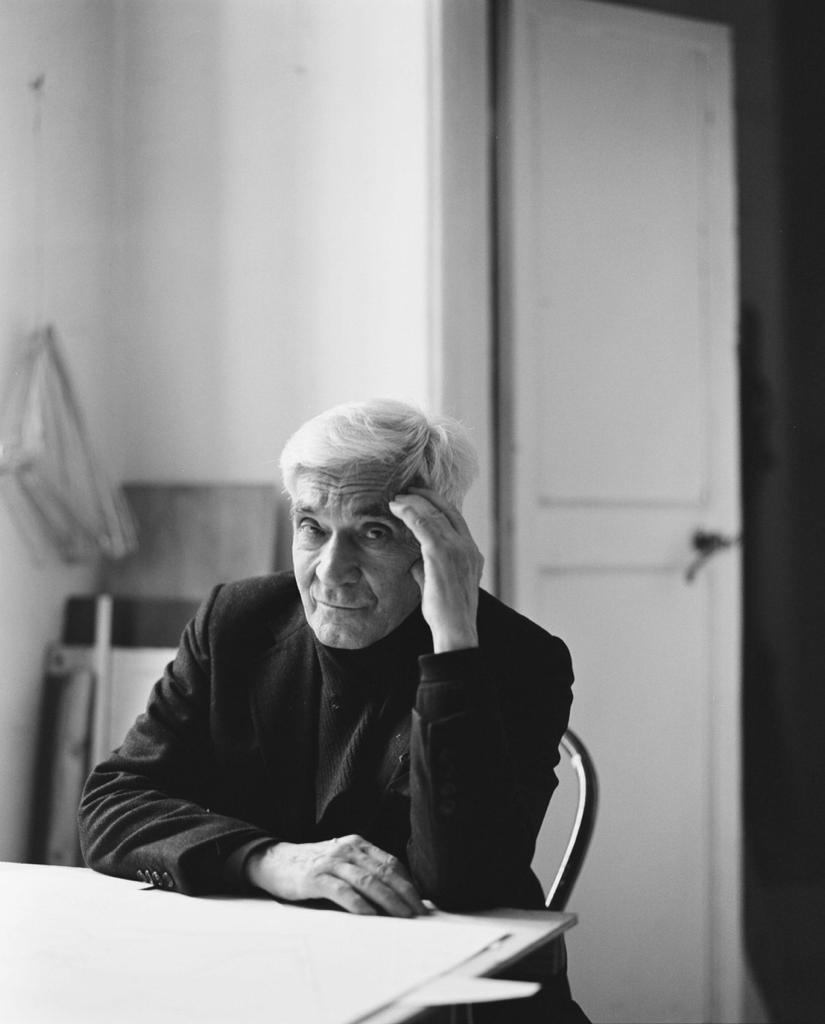Sergio Lombardo
Italian artist, psychologist and theorist Sergio Lombardo was born in Rome in 1939, where he still lives and works. In the late 1950s, Lombardo abandoned his studies in Law and Humanities to pursue a career in art, quickly becoming associated with a group of young artists known as the Scuola di Piazza del Popolo (Piazza del Popolo School), named after the historic Roman square where they gathered. Alongside Mario Schifano, Franco Angeli, Tano Festa, Giosetta Fioroni, Pino Pascali and others, Lombardo was part of a new avant-garde that redefined post-war Italian art by embracing popular imagery and reflecting the country’s shifting cultural landscape.
Lombardo’s first series of works, began when he was still a high school student, were the Monocromi (1958-60), self-defined works of “anti-art” intended to upend academic conventions. Wishing to erase subjectivity and expression from the artistic act by following strict theoretical and material principles, he composed modular grids of paper collaged onto canvas, which he then painted with monochrome industrial enamel. The artist exhibited these at Rome’s Galleria La Tartaruga, an important meeting place where he befriended other members of the Scuola di Piazza del Popolo. In 1961 Lombardo began work on his most celebrated series of paintings, the Gesti Tipici (1961-63), large-scale black-and-white reproductions of influential contemporary political figures from around the world. These paintings firmly aligned him with the popular subject matter and appropriated imagery prevalent in the work of Schifano and Festa, who themselves were responding to the growing American phenomenon of Pop Art. Although not intended as overt political statements, the Gesti Tipici powerfully captured the era’s preoccupation with mass media and the social conditioning of television, and pushed Lombardo to explore the psychological hold certain mages exert over an audience.
In 1965 the artist moved away from the figurative elements of the Gesti Tipici and the subsequent series Uomini Politici Colorati (1963-64), embracing a minimalist language of abstract geometric forms in the Superquadri (1965-68). Playfully challenging the boundaries between painting and sculpture, Lombardo designed works to be composed directly by the audience, inviting them into a collaborative process of creation. In the following years he continued to create installations, like his Sfere con Sirena (1968-69), exhibited at the 35th Venice Biennale. Throughout the 1970s, Lombardo expanded his research into the psychology of art and established the experimental journal Rivista di Psicologia dell’Arte. His prolific writings on the subject together form the basis of Eventualism, a theory of aesthetics premised on the psychological encounter, or “event”, that takes place between viewer and artwork. In 1980 Lombardo began an ongoing series of works investigating the concept of Stochastic Painting, using mathematical algorithms and randomization programs to generate aleatory patterns and compositions. He has been a member of the Professional Association of Psychologists of Lazio since 1992, and in 2015 he was appointed Master Academic Emeritus by the Academy of Fine Arts in Rome.
In 1970 Lombardo was included in the 35th Venice Biennale, where he exhibited the installation Sfere con Sirena (1968-69) as part of a dedicated room in the Central Pavilion; he later took part in the 1993, 2009 and 2013 editions. His work has been shown in numerous international institutions, including the National Museum of Modern Art of Tokyo (1967), Jewish Museum of New York (1968, 1999), Centre Georges Pompidou in Paris (1969, 1995), Philadelphia Civic Center (1973), Scuderie del Quirinale, Rome (2001, 2007), MLAC of the Sapienza Università di Roma (1995), Walker Art Center, Minneapolis (2015), Dallas Museum of Art (2015), Philadelphia Museum of Art (2016), and Tate, London (2016). In addition, his works are held in the permanent collections of the Galleria Nazionale d’Arte Moderna di Roma, the Philadelphia Museum of Art and the Galleria d’Arte Moderna, Turin among others.
